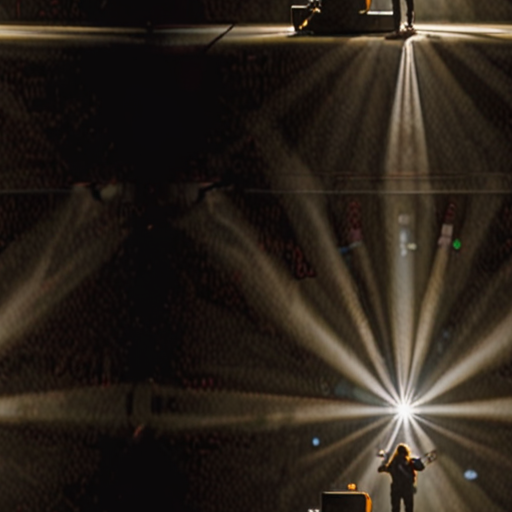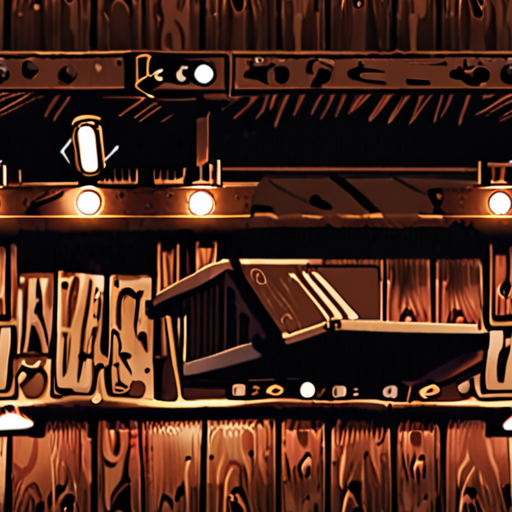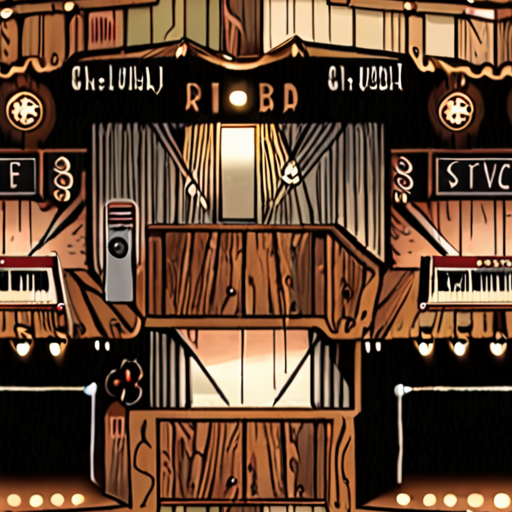As a musician, there’s nothing quite like the rush of performing live in front of an audience. However, bringing your musical vision to life requires more than just talent – it demands the right equipment to deliver a polished and memorable experience. From the essential instruments to the often-overlooked sound and lighting systems, every aspect of a live performance plays a crucial role in captivating your listeners. In this comprehensive guide, we’ll delve into the world of band equipment needs, providing you with a detailed checklist to help you prepare for success.

Equipment Needed for a Successful Live Performance
To deliver an exceptional live show, every musician requires a well-equipped setup.
-
Singer:
- Your own high-quality microphone
- In-ear monitors for optimal sound quality and stage awareness
- A reliable microphone stand and cable management system
- A backup microphone in case of emergencies
-
Guitarist:
- Two guitars, ideally with different tonal characteristics
- Pedals and effects processors to enhance sound and creativity
- An amplifier capable of delivering powerful, distortion-free sound
- Plectrums and guitar picks for varying tones and textures
-
Bassist:
- At least two bass guitars, each with its unique tone and playability
- Pedals and effects processors to augment low-end frequencies
-
Drummer:
- A drum kit consisting of a bass drum, snare drum, tom-toms, and cymbals
-
Keyboardist/Pianist:
- A keyboard or piano with a variety of sounds and features
-
Sound Engineer:
- A professional-grade mixing console for precise sound manipulation
Additionally, consider investing in essential accessories like cases, stands, and cables to protect and organize your equipment during transport and storage.
By having the right equipment and staying organized, you’ll be able to deliver a polished and memorable live performance that leaves a lasting impression on your audience.
What Does a Band Require?
A well-equipped band requires several essential items to deliver a high-quality performance.
- Mixing Desk
- Sufficient Channels for the Band’s Needs
- Speaker System for the Audience
- Poweful Enough for the Size of the Crowd
- Speakers for the Band
- No Less Than Four Monitor Speakers
- Good Selection of Microphones with Cables
- Enough of Each Type to Cover the Band’s Needs
Equipment Needed for a Successful Performance
To ensure a successful performance, a band should have:
- Guitar Amplifiers and Cabinets
- Bass Amplifier and Cabinet
- Drum Kit with Stands and Hardware
- Keyboards and Synthesizers
- Effects Processors and Pedals
- Monitor Mixers and In-Ear Monitors
- Backline Equipment Rental Options
Additional Requirements
In addition to the equipment listed above, a band may also need:
- Stage Lighting and Sound Systems
- Backstage Area with Amenities
- Load-In and Load-Out Crew
- Sound Engineer and Technician
- Stage Manager and Production Team
Band-Specific Requirements
Each band has unique requirements based on their style, genre, and performance setup.
- Rock Bands May Need Additional Drummers or Percussionists
- Jazz Bands May Require Saxophones, Trumpets, or Other Wind Instruments
- Folk Bands May Need Acoustic Guitars, Banjos, or Other Traditional Instruments
Conclusion
A well-prepared band requires a combination of essential equipment, additional requirements, and band-specific needs to deliver a high-quality performance.

Necessary Instruments in a Band
A typical rock band consists of four core members: lead vocalist, lead guitarist, rhythm guitarist, and drummer.
- Lead Vocalist: Sings and performs the primary vocals for the band, often accompanied by instrumental backing.
- Lead Guitarist: Plays the lead guitar parts, typically featuring melodic solos and intricate riffs.
- Rhythm Guitarist: Provides rhythmic accompaniment to the lead guitarist, often playing chords and strumming patterns.
- Drummer: Performs percussion duties, setting the tempo and rhythm for the rest of the band.
In addition to these core members, many bands feature additional instruments, such as keyboards, saxophones, trumpets, and bass guitars.
Common Instrument Configurations
Bands can have various configurations depending on their style and sound, but some common setups include:
- Power Trio: A three-piece band featuring a lead vocalist, lead guitarist, and drummer.
- Four-Piece Band: A classic setup consisting of a lead vocalist, two guitarists, and a drummer.
- Five-Piece Band: Adds a keyboard player or second guitarist to enhance the band’s sound.
Instrumentation and Sound Quality
The choice of instruments and equipment significantly impacts a band’s overall sound quality.
- Guitar Amps: Amplifiers specifically designed for electric guitars, crucial for achieving the desired tone.
- Microphones: Essential for capturing high-quality audio, particularly for live performances.
- Effects Pedals: Used to modify and enhance the sound of guitars and other instruments.

Starting Your Own Band
To start your own band, you’ll need to consider several factors, including your musical style, target audience, and financial resources.
-
Musical Style
Determine what type of music you want to play and who your target audience is. This will help you decide on the instruments and equipment you’ll need.
-
Band Members
You’ll need to recruit talented musicians who share your vision and are committed to working together. Consider holding auditions or posting ads online to find potential members.
-
Equipment and Instruments
You’ll need to purchase or rent instruments, amplifiers, and other necessary equipment. Research local music stores or online retailers to find the best deals.
-
Practice Space
You’ll need a dedicated space to rehearse and perfect your sound. Look for affordable options, such as community centers or shared rehearsal spaces.
-
Marketing and Promotion
Create a social media presence and develop a marketing strategy to reach your target audience. Consider hiring a publicist or manager to help promote your band.
-
Financial Resources
You’ll need to budget for equipment, travel, and other expenses associated with touring and performing. Consider crowdfunding or seeking sponsorships to support your endeavors.
-
Networking and Collaboration
Attend concerts, festivals, and networking events to connect with other musicians, promoters, and industry professionals. Collaborate with other bands or artists to gain exposure and build relationships.
-
Legal and Business Matters
Establish a business entity, obtain necessary licenses and permits, and draft a contract outlining roles, responsibilities, and expectations among band members.
By considering these factors and taking proactive steps, you can set yourself up for success and establish a thriving music career.
Legally Owning a Band Name
To legally own a band name, you need to register it as a trademark with the United States Patent and Trademark Office (USPTO). This protects your band’s identity and prevents others from using a similar name.
- Trademark Registration: Submit an application to the USPTO, providing details about your band, its history, and the reasons why you want to trademark your name.
- Search Existing Trademarks: Conduct a thorough search of existing trademarks to ensure your chosen name doesn’t infringe on someone else’s rights.
- File a Trademark Application: Pay the required fees and submit your application, which includes a description of your band, logo, and any other relevant materials.
- Wait for Approval: The USPTO will review your application and may request additional information or clarification before approving your trademark registration.
- Maintain Your Trademark: Once approved, you’ll need to renew your trademark every 10 years to keep it active and protected.
Benefits of Trademarking Your Band Name
Registering your band name as a trademark offers several benefits, including:
- Protection from Infringement: Prevents others from using a similar name, logo, or branding that could confuse customers or dilute your brand’s reputation.
- Exclusive Rights: Gives you exclusive rights to use your band name, logo, and branding, allowing you to control how your brand is represented.
- Increased Credibility: Having a registered trademark demonstrates your commitment to protecting your brand and investing in its success.
- Improved Brand Recognition: A registered trademark helps establish your brand’s identity and makes it easier for fans to recognize and remember your name.
Competitors in the Music Industry
Oedipus Band operates in a competitive music industry, with numerous bands and artists vying for attention. Some notable competitors include:
- Guitar World
- MusicRadar
- Songwriting Magazine
Best Practices for Trademarking Your Band Name
To successfully trademark your band name, follow these best practices:
- Conduct Thorough Research: Search existing trademarks and ensure your chosen name doesn’t infringe on someone else’s rights.
- Hire a Professional: Consider hiring a lawyer or trademark attorney to guide you through the application process and ensure everything is done correctly.
- Be Prepared to Provide Documentation: Gather all necessary documents, including your band’s history, logo, and any other relevant materials.
- Stay Up-to-Date with Renewals: Renew your trademark every 10 years to maintain its protection and active status.

Starting a Band: A Comprehensive Guide
As a musician looking to start a band, there are several factors to consider beyond just the music itself.
- Instrumentation
- Practice Space
- Marketing and Promotion
- Band Management
You’ll need to invest in quality instruments, amplifiers, and recording equipment, which can range from $2,000 to $10,000 or more.
Finding a suitable practice space can be challenging, but options include renting a studio, sharing a space with other bands, or investing in portable equipment.
You’ll need to develop a marketing strategy to reach potential fans and promote your music, which may involve social media advertising, email marketing, and live performances.
This includes tasks such as scheduling gigs, managing finances, and coordinating logistics, which can be handled internally or outsourced to a professional manager.
Initial Investment Breakdown
The initial investment for starting a band can vary widely depending on the scope of your project, but here’s a rough breakdown:
-
Instrumentation and Equipment:
$2,000 – $10,000
-
Practice Space Rental:
$500 – $2,000 per month
-
Marketing and Promotion:
$1,000 – $5,000 per quarter
-
Band Management Fees:
$1,000 – $5,000 per year
Conclusion
Starting a band requires careful planning, significant investment, and a commitment to ongoing promotion and management. By understanding these key factors and developing a solid strategy, you can set yourself up for success and build a loyal fan base.
0 Comments